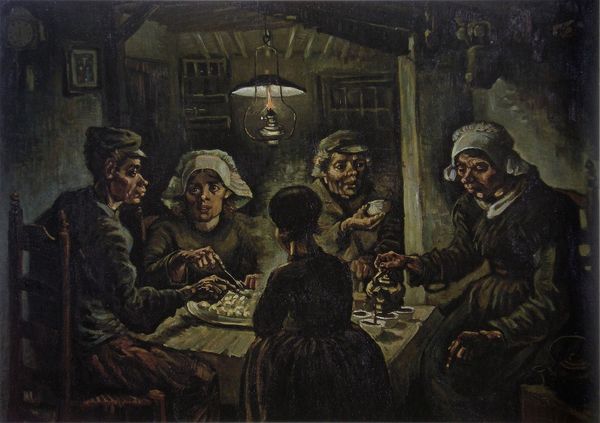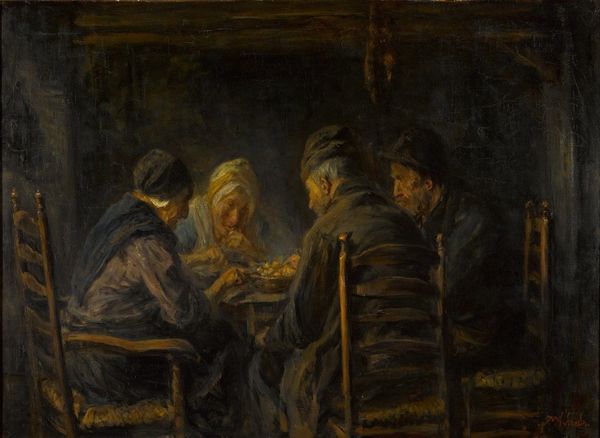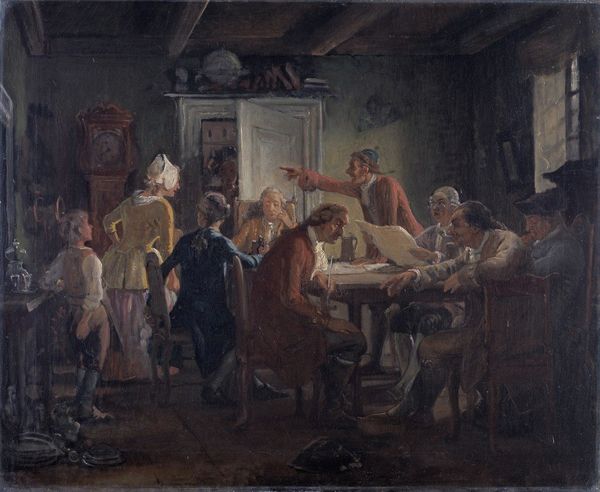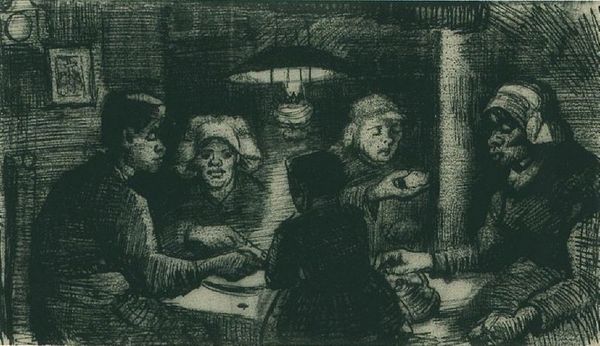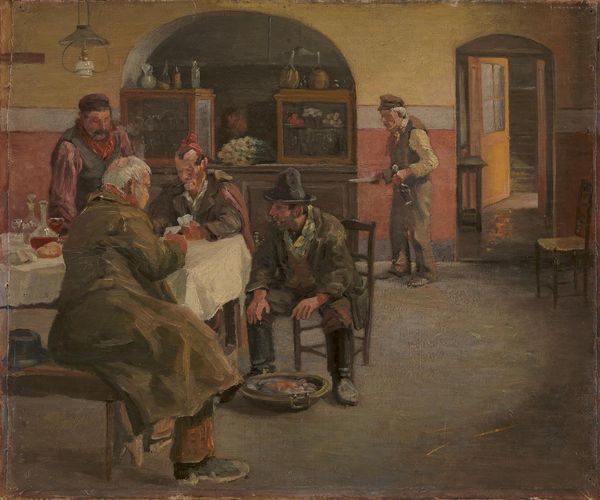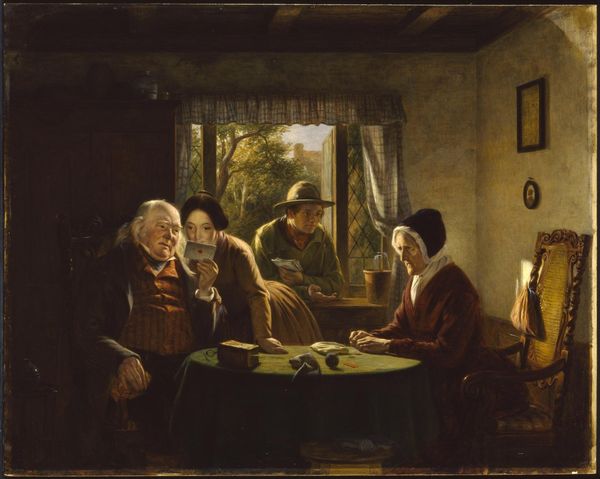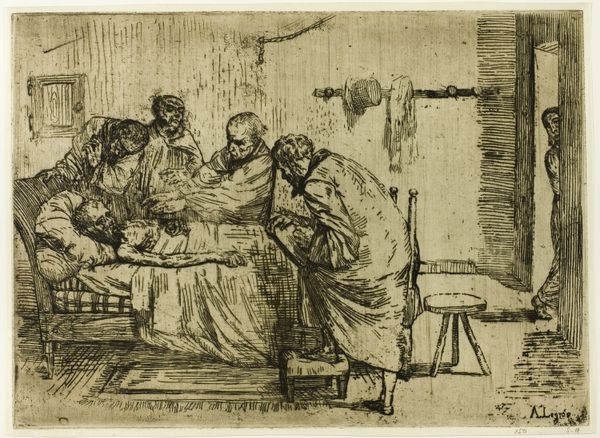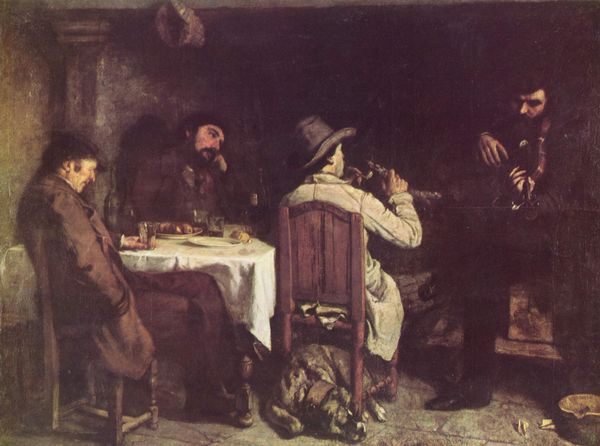
painting, oil-paint, impasto
#
portrait
#
figurative
#
painting
#
oil-paint
#
figuration
#
impasto
#
genre-painting
#
post-impressionism
#
portrait art
#
realism
Copyright: Public Domain: Artvee
Curator: As we stand before Vincent van Gogh's "The Potato Eaters," created in 1885 using oil paints with impasto, what strikes you first? Editor: The pervasive gloom, really. It’s an unsettling, almost oppressive use of dark greens and browns, punctuated only by the stark light cast on the faces around the table. It creates a heavy, somber mood. Curator: Indeed. Van Gogh aimed to depict peasant life authentically. These aren't idealized figures; the rough features and darkened tones speak to a life of hard labor and scarcity. The work becomes less about aesthetics and more about bearing witness to the realities of the working class in rural Netherlands, reflecting a period of agricultural hardship. The potatoes themselves—are their very materiality a testament to the family's reliance on the land? Editor: Certainly. But formally, consider how he frames them within the artificial light—it accentuates the shared space, the claustrophobia, but also the warmth they generate through proximity and purpose. The brushwork, almost sculptural in its density, emphasizes the earthiness of the subjects and setting, amplifying their presence even amidst the dimness. Curator: It is as much a painting about solidarity, about surviving together against economic challenges. Van Gogh spent considerable time among these families, even sharing their meals. This immersion informed the artist’s attempt to present not just their image, but also their world, using art as social commentary on the working class conditions. The choice to focus on the potato itself seems very intentional. It is quite simply, all that they have. Editor: Yet, even the simplest subjects carry formal possibilities. I am taken by how each figure exists uniquely as a function of light and shadow. He molds planes out of seemingly raw texture. There's more there, I think, than simply raw empathy. This piece reflects intense artistic consideration. Curator: Well said. The power in this painting emerges from that complex blend, that marriage between the materials of artistic creation, empathy for working families, and an appeal for justice and change in an industrializing world. Editor: Absolutely. Ultimately, it is both an emotionally impactful record of social circumstance and an engaging formal achievement. A deeply evocative depiction of shared humanity through structure, texture and form.
Comments
No comments
Be the first to comment and join the conversation on the ultimate creative platform.

